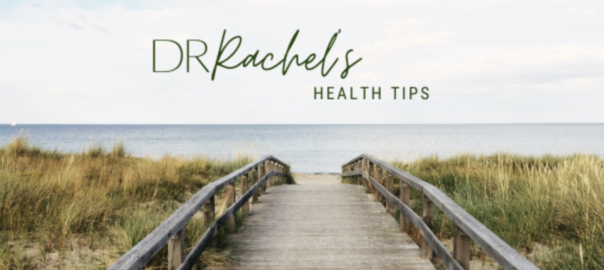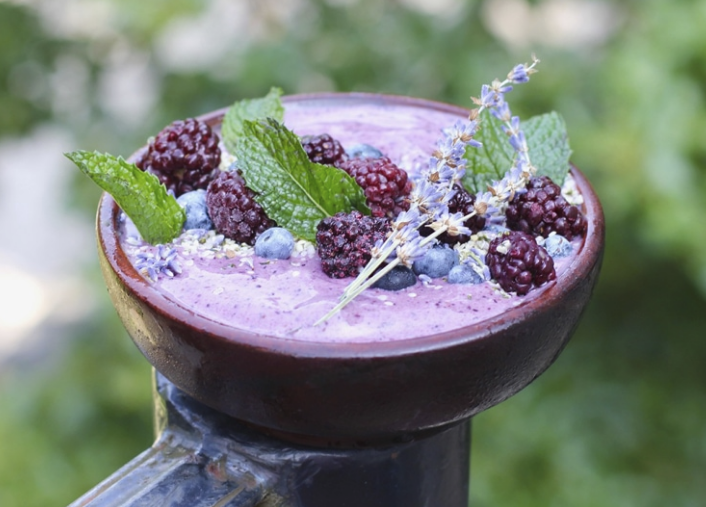|
That is all for now.
Wishing you all a happy and healthy week.
Dr. Rachel |

|
That is all for now.
Wishing you all a happy and healthy week.
Dr. Rachel |

Happy Monday Warriors!
I hope you all have had a wonderful October so far. It’s hard to believe it’s already 3/4 through the month!
Last month we talked about viruses that affect the function of the brain. If you missed it, make sure you catch up, since viruses seem to be the hot topic this time of year!
————————————————————–
This week I wanted to talk with you guys about certain nutrients that are needed for your brain to function at its best. If you’ve been following me for awhile, you might already know them and if not then WELCOME! You will learn quite a bit about the brain if you stick around.
Today I want to not only talk about these nutrients, but talk about them in two different ways through Craniopathy Chiropractic and through Genetic Based Nutrition, because those are what I believe are the BEST ways to get these nutrients effectively.
Nutrient #1. OXYGEN.
The brain uses three times as much oxygen as the muscles of the body do. It requires about 20% of the human bodies oxygen. We know that oxygen is VITAL of course, but for the brain it allows for growth and healing to occur. Our blood carries oxygen to the brain and is reliant on sufficient nitric oxide to do so. Oxygen comes from the lungs, in particular the lower part of the lugs that hold the most red blood cells to accept more oxygen.
The BEST way to get the most amount of oxygen is to breathe through your nose and fully expand your diaphragm. This will actually enable you to get that lower part of your lungs so the blood can carry it back up into the brain.
Oxygen depletion is the #1 thing that I focus on in my practice. This being because if your brain doesn’t have enough oxygen, you will constantly be chasing what is going on in your body. Whether pain, infections, or proper nutrition. It doesn’t matter how much good nutrition tips you get, how much water you drink or how much you exercise, if you aren’t getting oxygen up there… You won’t heal.
HOW DO I ASSESS?
Through the cranial system of course! There is a specific rhythm that the bones of the head go through. This rhythm is super important for blood to flow in and out of your brain, and oxygen to enter. When there is tension in this system, this means that this rhythm will be disrupted. Tension is this system also means a difficult time breathing correctly in and out of the nose. Some individuals find it hard at all to nasal breath, and when that is the case, there is severe tension within the head impacting the sinuses. Don’t just go running to the ENT, most of what I find is that the cranial system as A whole is the problem, not the sinuses.
Remember, the only way to access that nitric oxide is to nasal breathe! Time and time again, patient after patient will leave my office saying OMG I can BREATHE! It’s amazing how much your mood even changes when you are properly oxygenated.
This is why children and adults have temper and mood issues when they have sleep apnea or are mouth breathers. It affects how your brain functions!
The oxygen level also impacts the health of your lymphatic system in your brain, so if you aren’t properly oxygenated, you can have toxins build up in your brain and cause severe inflammation.
HOW DO YOU GET MORE OXYGEN THROUGH NUTRITION?!
You can also enhance your oxygen levels by enhancing the nitric oxide cycle through nutrition. Nitric oxide helps vasodilate (meaning expand) blood vessels to allow for more oxygen. However, for some, their genetic profiles don’t allow nitric oxide to be formulated effectively. Because of specific mutations and because this pathway is extremely sensitive to radiation and free radical damage, the cycle can get compromised, meaning less oxygen available. Not having enough nitric oxide can be very damaging neurologically to the body as well. You see, just like your brain, your nerves also need oxygen. Without it, they don’t function as well.
Finding out if your nitric oxide cycle is compromised can be found through specific kinesiology genetic testing (which I do). When we know that this is a player, the customized nutrition will help to overcome this obstacle and allow you to get more oxygen! Pretty cool right?
Nutrient #2. Energy (glucose & ATP).
Energy. The brain utilizes more energy than ANY other organ. I mean think about all that is has to do right?
The brain and body need actual ENERGY made from within called ATP. This is needed for every single cell of our body to do what it needs to do. If we don’t have enough ATP, our brain and body will be depleted. WE also get energy from another source: glucose. What’s the big organ for glucose production? The Liver.
The liver supplies sugar or glucose by turning stored glucose (glycogen) into glucose! It can also make glucose by harvesting amino acids, waste products and fat by products! Another reason to love that liver!
So we must have a robust and healthy liver to actually supply the energy (glucose) needed to our brain. Yet another organ our brain relies upon. The first if you remember were the lungs.
Body wise, we need make sure the liver is moving... All organs MOVE, and need movement to do what they need to do. So just like the brain needed to have proper movement for blood flow to happen, the other organs as well need proper flow and mobility.
HOW DO WE GET IT TO MOVE?
Through body work! Working on the nerves that control the liver are key to make sure it knows what to do! So enhancing the spinal areas related to the liver are key through chiropractic manipulation. Also doing reflex techniques to get the liver and gallbladder working more affectively through abdominal work is really helpful to get them moving!
Lastly, the liver is a big source of emotional stress, so if this is the case, you must uncover and start to heal from those emotional wounds so that the liver can do what it needs to! Emotional wounds cause physical problems too!
HOW DO WE GET BETTER ENERGY THROUGH NUTRITION?!
This is one of the FIRST and biggest impact pathways we focus on first with genetic nutrition. This being because if you don’t have enough energy, you can’t even begin to work on other genetic factors like MTHFR and others(HUGE mistake made by many who do genetic testing). Getting your body to make more ATP and to make and enhance your liver and glucose is really impactful! Many on my genetic protocols will say even after a week that their energy is amazing! We don’t have to give them extra energy help or adrenal supports, their own bodies make the energy they need!
Any why are they happier?
Because their brain is happier. It has the energy it needs to do what it needs to!
And, your liver is happier too. Which means detox pathways, hormones and other systems will work more efficiently!
A couple genetic variants I see when this is really impacted is the NDUFS gene and the ACAT gene mutations. Take care of those and the rest of the energy pathway will clear and be happy:)
So there you have it folks. Oxygen and Energy. If you give your brain these two, it will work for you the way you need it to and in a much HEALTHIER more EFFICIENT way.
Questions?
Ask Away!


The most important nutrient for our brain.
Happy Monday Tribe!
Just a friendly reminder. I am no longer in my mission valley office and full time in pacific beach!
In pacific beach, I do NOT have staff any longer. I will be giving the front desk at the office my schedule each day so that if you are waiting they know to inform me.
If my door is NOT open, I am with a patient. If it’s open, I’m not and you can come on in, unless I come get you.
You can either book online through my website or through my scheduling service 8587755138. The BEST way to reach me during business hours is either email or texting that number. I know it’s tough without staff to help with the flow, but I’ll do my best to make it a smooth transition!
With my scheduling service, you will get a reminder email the day before! If you DO NOT get an email, please inform me ASAP as sometimes the system might glitch and not fully schedule you or you didn’t fully schedule correctly. Just inform me that day or call to make sure your appointment is booked if you don’t receive the email.
Thanks for being awesome guys!
________________________________
I hope you enjoyed last week’s topic about wireless radiation and 5G. If you missed it make sure to re-catch in through my blog on my website. It’s a very important topic!
This week I want to talk about the MOST important nutrient needed for the brain to function.
It’s something that’s all around…. most don’t realize they are deficient in it.
You can’t eat it. You can’t touch it….
Have you guessed it?!
OXYGEN!!
I recently did a talk for one of my favorite non profits Beyond Concussion, and realized. that I talked all about the cranial system, nerves, brain and forgot the most important point of healing: OXYGEN.
Wow. (palm to head).
Well.. even I forget sometimes!
Oxygen is VITAL. we know this.
However, this being said. How many people walking around have oxygen depletion?
A good amount actually.
The brain uses about 3 times as much oxygen than the muscles in the body do. Because they use so much, they are most sensitive to any oxygen level changes and doesn’t survive or function very well without it.
When brain cells are depleted of oxygen, they die due to increased acidosis, they can begin to die off in as little as 5 minutes!
Oxygen in the brain is vital to growth and healing. It’s also vital to energy production. Oxygen is delivered through the blood, and through a process called cellular respiration. The brain uses more energy than any other organ, so it makes sense as to why it needs the most oxygen.
I’d say honestly speaking the MOST impactful thing I do in my care is increase oxygen in the brain and body.
Whenever there is an impedance in the cranial bones movement, this means their will be depletion in the oxygen available. You see, the movement of the cranial bones is vital, we need that movement for the blood circulation so oxygen can come in and be utilized.
So the first way the brain doesn’t get oxygen is improper movement within the bones of the head. When this pattern persists, the individual will grow into those patterns, and then create actual airway issues within the bone structure.
This means the nasal floor can have issues causing oxygen depletion, then down the throat if there’ any impedance can cause issues with airway as well.
Having a narrow palate is a home run for oxygen depletion. It’s very common. It usually happens from birth trauma, but can have other causes.
Sleep apnea, is growing more and more recognition mainly because more and more are recognizing its severity. Its not really just a matter of wearing a mask and you’re fine. Oxygen depletion is a big deal. HUGE. Decreasing your brain function, also a HUGE stress on the heart, and many other organs. Again oxygen is a BIG deal.
Anyone who’s had any head trauma has experienced this. A depletion of oxygen causes many issues for those with whiplash, concussion or anything even minor that happens to the brain.
What are some signs of oxygen depletion?
– Snoring
– Clenching/Grinding of teeth
-Dark circles underneath the eyes or around them
– memory isn’t as great
-sweating
-inattentiveness
-poor judgement
-TMJ problems
-irregular heart beat – slow or fast
-circulation problems
-lots of teeth infections (microbes loves not having oxygen)
-lots of infections in general
-fatigue
-headaches
-muscle cramping
How do we enhance our brain’s ability to have more oxygen?
1. Of course the first way is getting system moving! So Craniopathy care is needed to get everything back in balance.
2. Sometimes dental co-management is necessary. Tongue tie or maxillary expansion is a key component.
3. Sometimes sinus surgery is also necessary ( mainly adults). Since oxygen is super important, you have to make sure all airways are clear.
4. Certain supplements can also help transport oxygen, but most won’t work well until the cranial system is balanced. I like using ginko and some others.
5. Hyperbaric oxygen is a great way or live O2 (oxygen mask), to get it directly into the brain.
A common thing most patients say after treatment is : WOW I can breathe!!
We take it for granted when we can’t efficiently get oxygen. But DON’T.
If you can’t breathe through your nose, even through sleep your oxygen deficient.
Don’t be a statistic. There’s answers for help!

Happy Monday Everyone! I hope you all had a beautiful weekend and are enjoying this month’s topics revolving around the brain and brain injury!
Last week we talked about PTSD, emotional dysfunction and brain injury, so if you missed it, it’s a good one! Head on over to my website to catch up!
Brain injury, PTSD and messed up emotions.. Whats the connection?
——–
To end out the month of March, I thought we’d finish up with some nutritional recommendations that can be helpful when dealing with brain injury and just overall boosting your brain’s ability to function.
This is of course, after having done the first things we talked about this month like Craniopathy care, emotional help, and assessing the jaw/bite. These must be done first, but there are great anti-inflammatory foods as well as nutritional recommendations that can be very helpful to help the brain and nervous system heal more effectively.
Let’s start with some brain facts and why the nutrition you put in your body is so important to help your brain function and do all the tasks that it needs to:
1. Your brain utilizes 25% of the food energy we consume. That means whatever we put into our body, 25% of that is going straight away to the brain for fuel.
Meaning if you need your brain to heal, or if you need it to work harder or more efficiently, you can’t feed it junk. It utilizes a lot of nutrients!
2. Your brain utilizes 25% of O2. This is a big point why the craniopathy care is VITAL as well as examining air passageways to make sure it gets enough oxygen to heal/function.
3. The brain is 1-2% of our body fat.
4. The brain is made of 60% fat. “Fat Head”. That means it NEEDS a lot of good fats to function. The more inflammation and damage, the more good fats we need. Hence why so many individuals are leaning towards more ketogenic diets. I’m not saying it’s for everyone, and I modify it for different people, but so many are fat deficient in our society, with too much emphasis on carbohydrates and proteins.
5. The brain is THE MOST affected by nutrition/and it’s environment. We already talked about the brain environment a few weeks ago, so we most certainly need to change that or else nutrition won’t make much difference long term. However, since it’s the most affected by these two, we need to make sure as best as we can we are feeding it what it needs!
So what does the brain need?
– Well it needs good sources of fats like fish, grass fed meats, coconut oil, grass fed better, oils, nuts, avocados, ect.
– It also needs some good carbs in the sense of fruit and veggies
– It doesn’t need as much protein, but that being said if you are eating good amounts of grass fed proteins and fruits and veggies, protein won’t be a problem. Most people focus too much on getting enough protein which is usually dysfunctional if their upper digestion is improper and not breaking it down. Not so much that you need more consumption.
The four best brain foods are as follows:
1. Salmon – high in good fats omega 3
2. Wild Blueberries – high in natural antioxidants.
3. Greens: Spinach/kale/swiss chard/ collards – high in folate, iron, calcium and vitamins E and K.
4. Nuts: Walnuts.- high in good fats, ALA/ Omega 3
These are all wonderful nutrients that help us to utilize that brain power that we need, while giving the vital nutrients needed to heal.
Ww also know about the Gut/Brain Connections, as I’m sure you’ve heard me talk in exhaustion by now.
The human DNA has over 20,000 genes, which the gut microbiome has 10 million genes. This means that problems in the gut can have a HUGE impact on how our brain and body functions.
—-
For instance, you can have gut dysfunction and it not manifest as actual digestion problems. The gut/brain axis is so closely connected that it can really affect anything down that chain.
Symptoms such as tired, bloated, brain fog, cravings, or headaches….
All symptoms of dys-regulated gut/brain axis.
What I do like to mention though is yes, this gut/brain function is HUGE for adults but who is most affected by gut dysfunction is our children. Children are 10X more likely to feel effects than adults. That means you could give your child a junk meal, high in carbs or sugar, 25% goes straight to the brain for fuel and if given junk the child is going to associate a symptom 10X more and faster.
You will see this when a child eats a heavy sugar meal or carb heavy and has a temper tantrum that day or the next couple of days. Or maybe they have a food allergy you don’t know about, because they don’t have a stomach reaction. They are growing and developing, and their brain needs that good nutrition to help those brain pathways to develop. Quick changes in the mood or function of their body is most likely due to inflammation somewhere, and the head and gut are always my first go to’s.
It’s also important to differentiate for adults and children the difference between SNACKS and TREATS.
Many parents will give there kiddos a sugar filled bar, or fruit snacks, cookies, ect for a “snack”, when it in reality is a “treat.”
On the whole, we shouldn’t consume these foods daily for snacks. Once in a while it can be a “Treat”, like say at a birthday party or an event. But, snacks should always consist of actual food needed to help us function.
A study done By Oxford in 2005 showed that brain foods in general helped school children with reading, spelling and writing. When we “feed” the brain what it needs, it will perform how we need it to.
The more junk food we consume, the more what is called oxidative stress builds up in our bodies. What do I mean by junk?
– Processed foods! Anything in a box or bag. Breads, pastas, rice, GMO foods, fast foods, lots of sugar, corn syrup, hydrogenated oils, to name a few. Basically just not real food. Even some “organic” labeled food can be junk. Like organic crackers… Yes maybe the ingredients are better, but is a high carb load really what you need for your brain, probably not unless you are an elite athlete that burns so many carbs.
Oxidative stress can come from other things as well such as physical stress, metabolism, uv rays, alcohol, pollutants and toxins, pesticides and herbicides, lack of sleep, smoking, ozone, emotional stress, processed foods, radiation, car exhaust, EMFs ect….
We DON’T Want oxidative stress because that means our cells and in particular our cell’s membranes won’t work well. We need those membranes to be strong. If they aren’t memory will decline, and chronic inflammation will occur.
That’s why eating foods high in anti-oxidants and using other means like Kangan water, DoTerra Essential oils like clove, rosemary, juniper berry and others which are high in antioxidants are so helpful for taking that oxidative stress down.
Unfortunately our foods are just not rich enough in these brain nutrients so supplementation is often needed. This is because our quality again is so poor, soil quality ect. So supplementation to fill in these gaps is VITAL.
Giving things like Omegas, whole food vitamins/minerals, gingko, alpha lipoic acid, glutathione/milk thistle and others are vital for that brain function. These I offer in my practice. Other’s are needed with brain injury or brain infections that happen. I like to use actual brain gland to support these and stem cell organ supplementation to help rebuild the brain.
—-
Other ways we can improve our brain is through neuro aerobics.
Doing things to constantly keep the brain active. This is great for ADD, brain fog, memory, brain injury and dementia.
– Things like exercise
– Brain exercises like those found on luminosity or other kinetic movements
-learning an instrument
– learning a new craft
-educating in general
-moving while working your brain like working out and counting by 2s and 3s or backwards.
Our brain will adapt if we don’t challenge it. That’s why those who are more active have actually smarter brains.
There’s so much research for exercise and brain function because it increase difference factors in the brain like NRF2 and others.
I hope this topic was helpful to you! Take care of your brain it’s the BEST ASSET you have really.
Till next week!
Oil of the WEEK.

The oil of the week this week is Yarrow Pom.
Pomegranate is known as an amazing anti-oxidant, but this nutraceutical combines cold pressed pomegranate oil with Yarrow EO! It’s the first of it’s kind.
Yarrow|Pom Oil Product Description
A unique blend of Yarrow essential oil and Pomegranate seed oil, the doTERRA Yarrow|Pom Active Botanical Nutritive Duo offers significant benefits for the skin, body, and emotions. This proprietary blend has been carefully crafted to provide benefits related to the aging process, feelings of vitality, and overall wellness. Once you experience the variety of benefits that Yarrow|Pom oil has to offer, and breathe in the distinctive fruity, spicy, and herbaceous aroma, you’ll see that this is a blend you definitely want to add to your essential oil collection.
Yarrow|Pom Oil Uses and Benefits
Chemistry of Yarrow|Pom Oil
Main chemical components: Punicic acid, β-caryophyllene, chamazulene
The exclusive, proprietary doTERRA Yarrow|Pom blend contains chemical components that support the body when taken internally* With chemical components like the omega 5 punicic acid, antioxidants, β-caryophyllene, and chamazulene, the Yarrow|Pom oil blend supports immune, nervous system, and cellular function and rejuvenation.* Not to mention, the blend is vegan-friendly.
Wishing you a happy and healthy week,
Dr. Hamel

Happy Monday Everyone! I hope you’ve all enjoyed this month’s topics so far about brain injury. Last week we went over brain injury and the connection with your bite. If you missed it don’t worry, you can head on over to my website and catch it!
This week we will be digging deeper into the part of brain injury that gets kind of shoved under the rug, and that’s the emotional aspect.
PTSD for example: An estimated 70 percent of adults in the United States have experienced a traumatic event at least once in their lives and up to 20 percent of these people go on to develop post-traumatic stress disorder, or PTSD. An estimated 5 percent of Americans—more than 13 million people—have PTSD at any given time.
Pretty significant huh?
PTSD is not just found in our military, although it is extremely common. So, being so common you’d think it would be talked about more, or at least more treatment options.
However, it’s quite to opposite.
Especially in our veterans and military care, many are not even given proper examinations and are just medicated as the only option.
—–
However, in my practice I always want to find a source. And through my research of the brain, I’ve found time and time again research connecting PTSD, mood dys-regulation and the such to previous head trauma.
One large study that look at at 2300 veterans 3-4 months after returning from IRAQ for 1 year. They found that:
“124 (4.9%) reported injuries with loss of consciousness, 260 (10.3%) reported injuries with altered mental status, and 435 (17.2%) reported other injuries during deployment. Of those reporting loss of consciousness, 43.9% met criteria for post-traumatic stress disorder (PTSD), as compared with 27.3% of those reporting altered mental status, 16.2% with other injuries, and 9.1% with no injury. Soldiers with mild traumatic brain injury, primarily those who had loss of consciousness, were significantly more likely to report poor general health, missed workdays, medical visits, and a high number of somatic and post-concussive symptoms than were soldiers with other injuries.”
See the correlation?
In my practice, since I ask all the questions, for anyone either young or old with any mental health concern or issue, head trauma is ALWAYS my #1 question.
Because of this research and lots more just like it. Head trauma causes imbalances within the whole body, including the emotional system.
So shouldn’t that be the first question doctors ask when vets come in with PTSD like symptoms? Or what about even just headaches or pain? I would think so.. but unfortunately it’s not, and that is why more education is needed.
——
Chronic in pain in general can also cause mental/emotional issues to arise. Pain and especially chronic pain messes with the head. It interferes with what we can do.
Which then causes emotions to arise because of the limitations it produces.
Taking chronic pain away naturally in itself can relieve a good amount of emotional issues that have arose. This is because when the brain and nervous system are constantly bombarded with pain signals, stabilizing the emotions isn’t a priority. It just isn’t. Regulating your neurotransmitters and hormones isn’t a priority when it has to constantly focus on pain, heart beating, lungs pumping, ect. When you start alleviating some of that pain, you free up your brain to focus on those emotional issues.
But, what if you can’t find the source of pain? This is often the complaint of individuals that find their way to my practice.
They’ve tried conventional medicine, they’ve tried chiropractic, massage, acupuncture, PT……
But still pain.
Well, did they even ask about your head? If they did and you had a concussion or brain injury (don’t have to hit your head), what are your options?
Maybe some of the above mentioned can be utilized if the provider is open minded. But I find the actual brain environment is NEVER addressed. Craniopathy care is not very known. But normalizing that movement is HUGE for that chronic pain and dysfunction.
Once we do this…
I’ve seen time and time again in my practice that emotional traumas start coming up.
Why? Well cranial care in general opens up and frees the brain to focus on other aspects that need healing. Emotional traumas are one possibility.
This is where the technique I utilize in my practice called NET (neuro-emotional technique) comes into play. Utilizing this after doing the cranial care allows the patient’s thought processes to start changing from “always have” to “had in the past, but now can heal” for example.
These are REAL treatments for these types of conditions. These aren’t ALL the treatments though. I still recognize and appreciate the other benefits and needs of mental healthcare professionals absolutely.
I just think first taking care of the brain and though processes is and should be the first priority.
In other ages, say children with emotional issues, head trauma can come even just from the birth process, or any head trauma they had otherwise. Hitting their heads, sports, ect. If you notice a mood change, check the brain and nervous system first and calm it down.
For other PTSD related issues, the treatment is still the same in my office. Find the cause. What is the trigger?
Can we change those though processes? Can we balance the brain more to handle it? What else is causing inflammation in the brain?
We will talk about nutritional recommendations for brain injury and healing next week, so stay tuned warriors.
Oil of the WEEK.

The oil of the week this week is Copiaba.
Instead of focusing on just one species of Copaifera, dōTERRA recognized the power behind a blend of several species to ensure the highest quality and potency. Resin from Copaifera reticulate, officinalis, coriacea, and langsdorffii are meticulously harvested and combined to create a synergistic blend. Not only does this increase the therapeutic power of the oil, but it also enables the different species to offer their best components to the blend for one power-packed essential oil with high levels of the primary constituent beta-caryophyllene.
No, not exactly.
If you will allow me to tap into my science nerd for a moment, I can break down the basics for you.
The main chemical component of Copaiba is the cannabinoid beta-caryophyllene, or BCP, though it does NOT affect the body like the psychoactive cannabinoids in marijuana.
We all have endocannabinoids in our bodies that communicate with receptors. They balance a wide variety of tasks to keep our body balanced both internally and externally. From immune and inflammatory response to memory recall and appetite, these endocannabinoid receptors are busy supporting the body to keep us in top condition.
In recent years, scientists have studied these cannabinoids for a way to harness their neuroprotective nature and sustaining benefits.
They have identified two subtypes – CB1 and CB2. Theres a lot more to discover!
CB1 occurs in the nerve cells of the brain to influence memory and pain regulation, but, when triggered, does produce the psychoactive effects we commonly associate with a “marijuana high.” This has led scientists to search for a solution that does not create the “high,” most often in a synthetic version.
And lurking in the Amazonian rainforests was Copaiba rich with beta-caryophyllene.
CB2 receptors work within the immune system where they affect white blood cells to support healthy immune function while soothing and relaxing the body to reduce inflammation.
BUT…and it’s a huge one…when triggered, they do NOT have the same psychoactive effects on the body.
The primary constituent of Copaiba – beta-caryophyllene – can bind to the CB2 receptors, thereby supporting a healthy nervous system as well as supporting immune function. While it offers similar support as its essential oil counterparts – Black Pepper, Clove, Melissa, and Rosemary – its ability to bind to the CB2 receptors allows the body to find relaxation and soothing without the psychoactive side effects.
And dōTERRA Copaiba EO boast over 60% of beta-caryophellene!
Based on this research concerning the CB2 receptors, scientists have found Copaiba to be an amazing alternative to synthetic versions of pain relievers, especially for those suffering from chronic conditions. Some even say that it may top Helichrysum in its ability to naturally relieve the body and reduce inflammation of many different kinds.
Combining it with Clove and a carrier oil creates an amazingly powerful topical spot treatment or massage blend for those suffering from chronic pain.
One of my favorite uses for Copaiba is head and neck tension relief. Combining it with gems like Peppermint, Lavender, Marjoram, and Frankincense creates an amazing blend that rivals any OTC or prescription drug on the market. Try this recipe if you deal with tension on a regular basis:
Also great for teething in infants!

Eat berries every day. Berries are full of antioxidants which help protect your brain. They are also high in fiber, lower on the glycemic index (so they don’t cause inflammation), and a wonderful healthy snack. Try this easy berry smoothie to work more berries into your diet!
OPTIONAL ADD-INS: Maca powder, hemp seeds, maqui powder, or lemon zest
Wishing you all a safe and happy week,
Dr. Hamel